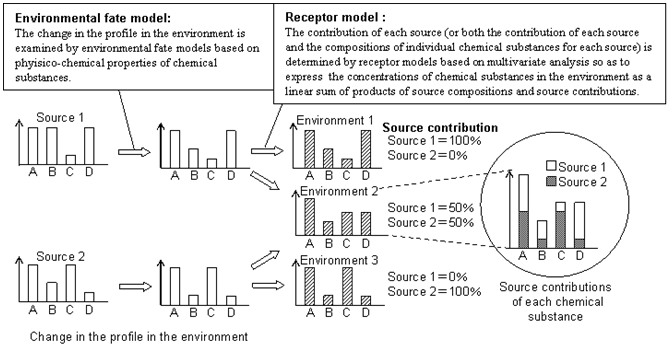Quantitative Risk Estimation
>>Quantitative Indices of Risk
The reduction of health risk is expressed in such indices as life saved, life-year saved, QALYs (Quality Adjusted Life-Years) gained. QALYs is the life-years weighted by their Quality-of-Life (QoL). By using such indices that can represent various types of health effects and risks, taking in consideration the individual variability in exposure levels and sensitivity to the toxic effects, quantitative estimation and comparison of the risks of various chemical substances are now made possible.
Monetary valuation using Willingness to Pay (WTP) is also a useful measure of health gains as well as QoL. RMST also estimates WTP for reduction of small amount of health risk using contingent valuation method (CVM) and conjoint analysis (CA).
>>Infrastructures for Quantification of Risk
For the purpose of quantitative risk estimation, "Exposure Factors Handbook in Japan", which includes various factors relating to exposure assessment and information on the individual variability of exposure levels, has been prepared.
Further, Risk Calculator, which calculates the risk levels based on the approaches mentioned above, is being developed.
Exposure Analysis
>>Elucidation of Sources for Environmental Pollutants Based on the Data on their Environmental Concentrations
Understanding the sources that contribute to environmental pollutants is essential to exposure assessment and developing effective countermeasures. In general, there are only limited sets of available information about the emission rates of such chemicals from sources.
There is uncertainty about what percentage of a certain chemical substance in the environment is derived from each of known sources, or what portion derives from other sources that are yet to be identified.
Based on the data on the environmental concentrations of numbers of chemical substances, RMST identified the major sources of the chemical substances in the environment and estimated their source contributions, using (1) receptor models, which are tools for source identification based on statistical multivariate analysis; and/or (2) environmental fate models, which are tools to estimate the environmental fate of chemical substances based on their phyisico-chemical properties (Fig. 1).

Fig.1 Elucidation of sources for environmental pollutants based on the data on their environmental concentrations.
Each graph indicates the profile of chemical substances (A, B, C, and D), that is, the compositions of individual chemical substances.
>>Assessment of Indoor Air Pollution
To estimate the risk of the exposure to indoor chemical substances, it is important to know the distribution of long-term exposure levels. In the previous study, however, indoor or personal exposure levels were measured for only a day or a week.
If the risks are estimated by using these data, the distribution of exposure levels and the risks will be overestimated. Thus, the variation and distribution of the ventilation rates have to be obtained as well as the indoor levels and the emission rates of target chemical substances. These parameters will be measured in 25 houses everyday during a week in four seasons.
Socio-Economic Analyses in Chemical Risk Management
>>Development of Preference Elicitation Method for Risk Reduction and Novel Technologies
To elicit preferences of the general public for various risks and technologies, RMST has been developing methodologies and also conducting surveys by means of questionnaires. The main focuses of the surveys are: (1) whether and how preferences differ according to the type of risks; (2) how preferences change according to the timing of risk reduction; and (3) whether and how preferences differ according to the age of the subject.
The question (1) is being examined as the problem of the “cancer premium”. The question (2) is about the discount rate, and therefore, the applicability of quasi-hyperbolic discount function is being investigated. The question (3) is the problem of inter-generational choice and is related to an important problem of what is the appropriate measure of health risk reduction: life, life-year, quality adjusted life-year, or others. The other areas of interest are the underlying value and risk perception that explain their preferences.
>>Publication and improvement of Socio-Economics Analysis Guidelines
RMST has released on CRM website the guidelines and procedures for calculating costs and benefits of reducing emissions of chemical substances from business facilities. The contents will be updated continuously. These guidelines and procedures are applied to the development of “Risk Assessment Documents” in CRM to evaluate effectiveness of the measures taken to reduce chemical risks.
>>Regulatory Impact Analyses (RIA) Database
The trial of RIA started in the fiscal year 2004 in Japan. Regulations of chemical substances are also included. RIA has been conducted since 1980s in the U.S. and the U.K. These existing analyses will serve as good references in Japan, and therefore, the classification by the break-down of chemical substances and the analytical techniques for their effective use is being conducted.